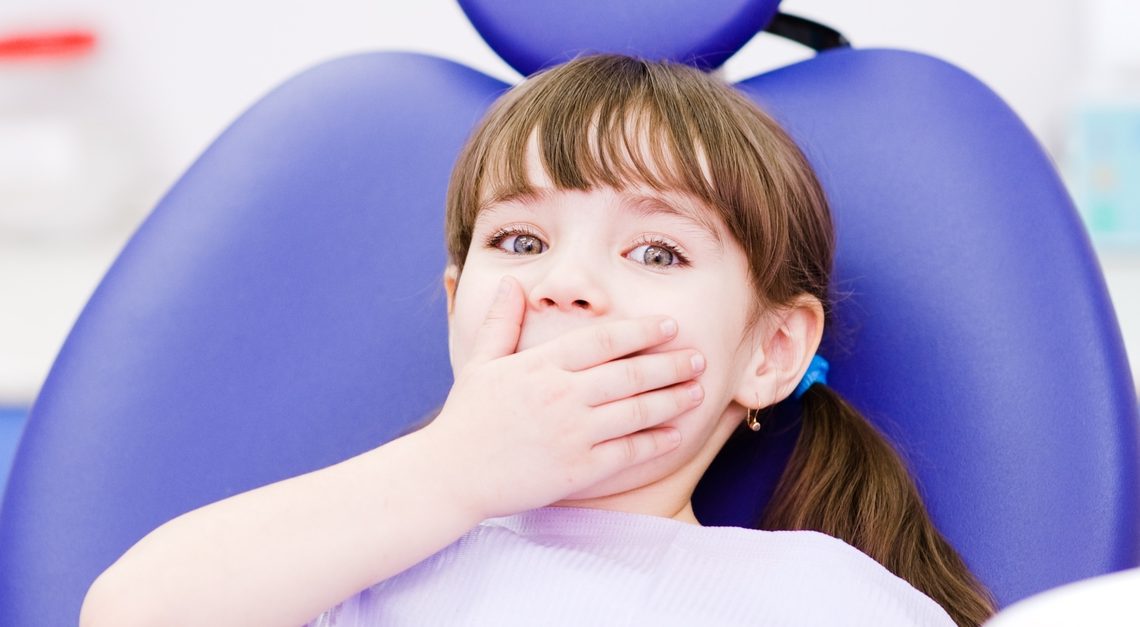Children’s Dentistry estimates that about 70% of children have malocclusion. This is a term we use to describe a misalignment of teeth, a poor bite, or a problem of the upper and lower teeth fitting together when biting. If this is left untreated, it can result in chewing problems, crowding of teeth, overbite, gum disease, an increase of decay or cavities, jaw joint problems, headaches or migraines, and even mouth breathing. As a result, we screen kids early so that we can catch signs of malocclusion before it becomes a big problem. Therefore, we recommend your child be evaluated by age 7 since this can be critical to your child’s health, well-being, self-esteem and comfort. Here are 5 ways your child’s teeth could be in danger by waiting too long for orthodontic treatment.
Open Bite or Teeth That Don’t Fit Together Properly
Does your child suck his or her thumb? Does he or she have tongue thrust which has created a “buck tooth” appearance? We often find that thumb sucking and tongue thrust affect the shape and size of your child’s jaw. Parents often worry about the way their children look, because it can severely affect their self-esteem. Consequently, by fixing the shape of your child’s jaw, we have seen a big change in the confidence level of many kids.
Crowding or Rotations in Children’s Dentistry
There are many reasons that result in crowding or rotations. But kids get self conscious about how their teeth look, and that’s really important. In many crowding cases, dentists or orthodontists will either do surgery or extract teeth. But there is another option if we can diagnose early. And this option does not include surgery or extractions and results in a healthier jaw joint, improved breathing and better aesthetic results.
Small Jaw and Large Teeth
If your child has a small jaw, it can lead to problems when adult teeth start to erupt. We see this all the time, and it’s important to catch it early. If caught early, we can help guide the growth of your child’s jaw. That will result in more room for those big adult teeth. In addition, this way we can prevent the need for extractions or surgery in the future. Therefore you end up with a more comfortable, and less costly orthodontic experience in Children’s Dentistry.
Facial Profile
The most common type of malocclusion is called Class II malocclusion. This is where a child has a retruded chin, and their jaw looked “pushed back”. In the past, this type of malocclusion was treated with tooth extractions, headgear, and surgery. With early orthodontic intervention, we can now prevent the use of these invasive procedures and guide the jaw into proper position comfortably.
You Don’t Know About Your Child’s Condition
As much as we try to do the best we can for our kids, it can be challenging when there is so much information available to us. If your child is 7 years of age or older, be sure to ask your dentist about your child’s orthodontic needs. Therefore, you stay one step ahead in case there is a need for early treatment. Early treatment can be more comfortable for both parents and children. It also reduces the risk of having more severe complications in the future.


